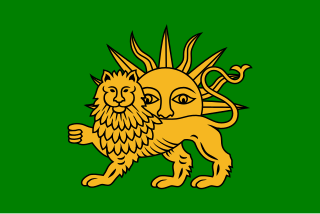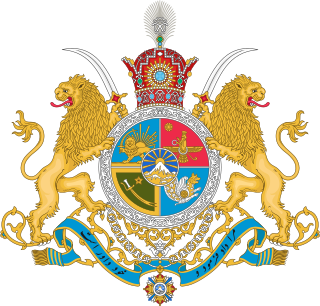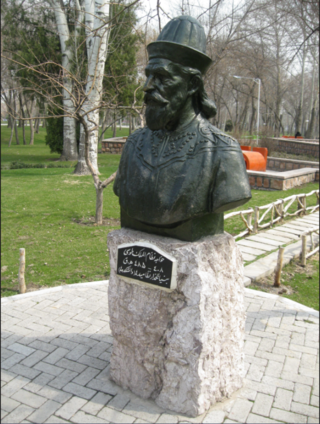
The Safavid dynasty was one of Iran's most significant ruling dynasties reigning from 1501 to 1736. Their rule is often considered the beginning of modern Iranian history, as well as one of the gunpowder empires. The Safavid Shāh Ismā'īl I established the Twelver denomination of Shīʿa Islam as the official religion of the Persian Empire, marking one of the most important turning points in the history of Islam. The Safavid dynasty had its origin in the Safavid order of Sufism, which was established in the city of Ardabil in the Iranian Azerbaijan region. It was an Iranian dynasty of Kurdish origin, but during their rule they intermarried with Turkoman, Georgian, Circassian, and Pontic Greek dignitaries, nevertheless, for practical purposes, they were Turkish-speaking and Turkified. From their base in Ardabil, the Safavids established control over parts of Greater Iran and reasserted the Iranian identity of the region, thus becoming the first native dynasty since the Sasanian Empire to establish a national state officially known as Iran.

The Pahlavi dynasty was the last Iranian royal dynasty that ruled for almost 54 years between 1925 and 1979. The dynasty was founded by Reza Shah Pahlavi, a non-aristocratic Mazanderani soldier in modern times, who took on the name of the Pahlavi language spoken in the pre-Islamic Sasanian Empire to strengthen his nationalist credentials.

Abu Ali Hasan ibn Ali Tusi, better known by his honorific title of Nizam ul-Mulk, was a Persian scholar, jurist, political philosopher and vizier of the Seljuk Empire. Rising from a low position within the empire, he became the de facto ruler of the empire for 20 years after the assassination of Sultan Alp Arslan in 1072, serving as the archetypal "good vizier". Viewed by many historians as "the most important statesman in Islamic history", the policies implemented by Nizam ul-Mulk remained the basic foundation for administrative state structures in the Muslim world up until the 20th century.

Ahmad Sanjar was the Seljuq ruler of Khorasan from 1097 until 1118, when he became the Sultan of the Seljuq Empire, which he ruled until his death in 1157.

King of Kings was a ruling title employed primarily by monarchs based in the Middle East. Although most commonly associated with Iran, especially the Achaemenid and Sasanian Empires, the title was originally introduced during the Middle Assyrian Empire by king Tukulti-Ninurta I and was subsequently used in a number of different kingdoms and empires, including the aforementioned Persia, various Hellenic kingdoms, India, Armenia, Georgia, and Ethiopia.

The Shaddadids were a Sunni Muslim dynasty of Kurdish origin. who ruled in various parts of Armenia and Arran from 951 to 1199 AD. They were established in Dvin. Through their long tenure in Armenia, they often intermarried with the Bagratuni royal family of Armenia.

The Bagrationi dynasty is a royal dynasty which reigned in Georgia from the Middle Ages until the early 19th century, being among the oldest extant Christian ruling dynasties in the world. In modern usage, the name of the dynasty is sometimes Hellenized and referred to as the Georgian Bagratids, also known in English as the Bagrations.
Haft Tepe is an archaeological site situated in the Khuzestan Province in south-western Iran, about 15 kilometers southwest of the ancient city of Susa. At this site the possible remains of the Elamite city of Kabnak were discovered in 1908, and excavations are still carried out.

Ahar is a city in the Central District of Ahar County, East Azerbaijan province, Iran, serving as capital of both the county and the district. Ahar was the capital of Karadag Khanate in 18th and 19th centuries.
The Seljuk Empire, or the GreatSeljuk Empire, was a high medieval, culturally Turco-Persian, Sunni Muslim empire, established and ruled by the Qïnïq branch of Oghuz Turks. The empire spanned a total area of 3.9 million square kilometres from Anatolia and the Levant in the west to the Hindu Kush in the east, and from Central Asia in the north to the Persian Gulf in the south, and it spanned the time period 1037–1308, though Seljuk rule beyond the Anatolian peninsula ended in 1194.

Arasbaran, also known as Qaradagh, is a large mountainous area stretching from the Qūshā Dāgh massif, south of Ahar, to the Aras River in East Azerbaijan Province of Iran. The region is confined to Aras River in the north, Meshgin Shahr County and Moghan in the east, Sarab County in the south, and Tabriz and Marand counties in the west. Since 1976, UNESCO has registered 72,460 hectares of the region, confined to 38°40' to 39°08'N and 46°39' to 47°02'E, as biosphere reserve with the following general description:
This biosphere reserve situated in the north of Iran at the border to Azerbaijan belongs to the Caucasus Iranian Highlands. In-between the Caspian, Caucasus and Mediterranean region, the area covers mountains up to 2,200 metres, high alpine meadows, semi-arid steppes, rangelands and forests, rivers and springs. Arasbaran is the territory of about 23,500 nomads who are mainly living in the buffer and transition zones (2000). Economic activities in the biosphere reserve are mainly agriculture, animal husbandry, horticulture, apiculture, handicrafts and tourism, but business activities can also be found in urbanized areas.

The Shirvanshahs were the rulers of Shirvan from 861 to 1538. The first ruling line were the Yazidids, an originally Arab and later Persianized dynasty, who became known as the Kasranids. The second ruling line were the Darbandi, distant relatives of the Yazidids/Kasranids.
Ahar is a village in Rudbar-e Qasran Rural District, Rudbar-e Qasran District, Shemiranat County, Tehran Province, Iran. At the 2006 census, its population was 702, in 232 families.
Ahar Meshkin is a village in Khararud Rural District, in the Central District of Khodabandeh County, Zanjan Province, Iran. At the 2006 census, its population was 1,010, in 217 families.
Rashtabad-e Qadim is a village in Azghan Rural District, in the Central District of Ahar County, East Azerbaijan Province, Iran. At the 2006 census, its population was 528, in 121 families.
Sarilar is a village in Qeshlaq Rural District, in the Central District of Ahar County, East Azerbaijan Province, Iran. At the 2006 census, its population was 24, in 7 families.
Sheykh Qeshlaq-e Olya is a village in Qeshlaq Rural District, in the Central District of Ahar County, East Azerbaijan Province, Iran. At the 2006 census, its population was 145, in 28 families.
Qeshlaq-e Kohol is a village in Vargahan Rural District, in the Central District of Ahar County, East Azerbaijan Province, Iran. At the 2006 census, its population was 57, in 11 families.
Vargahan is a village in, and the capital of, Vargahan Rural District of the Central District of Ahar County, East Azerbaijan province, Iran.

Jameh Mosque of Ahar is related to the Ilkhanate - Safavid dynasty and is located in Ahar.












